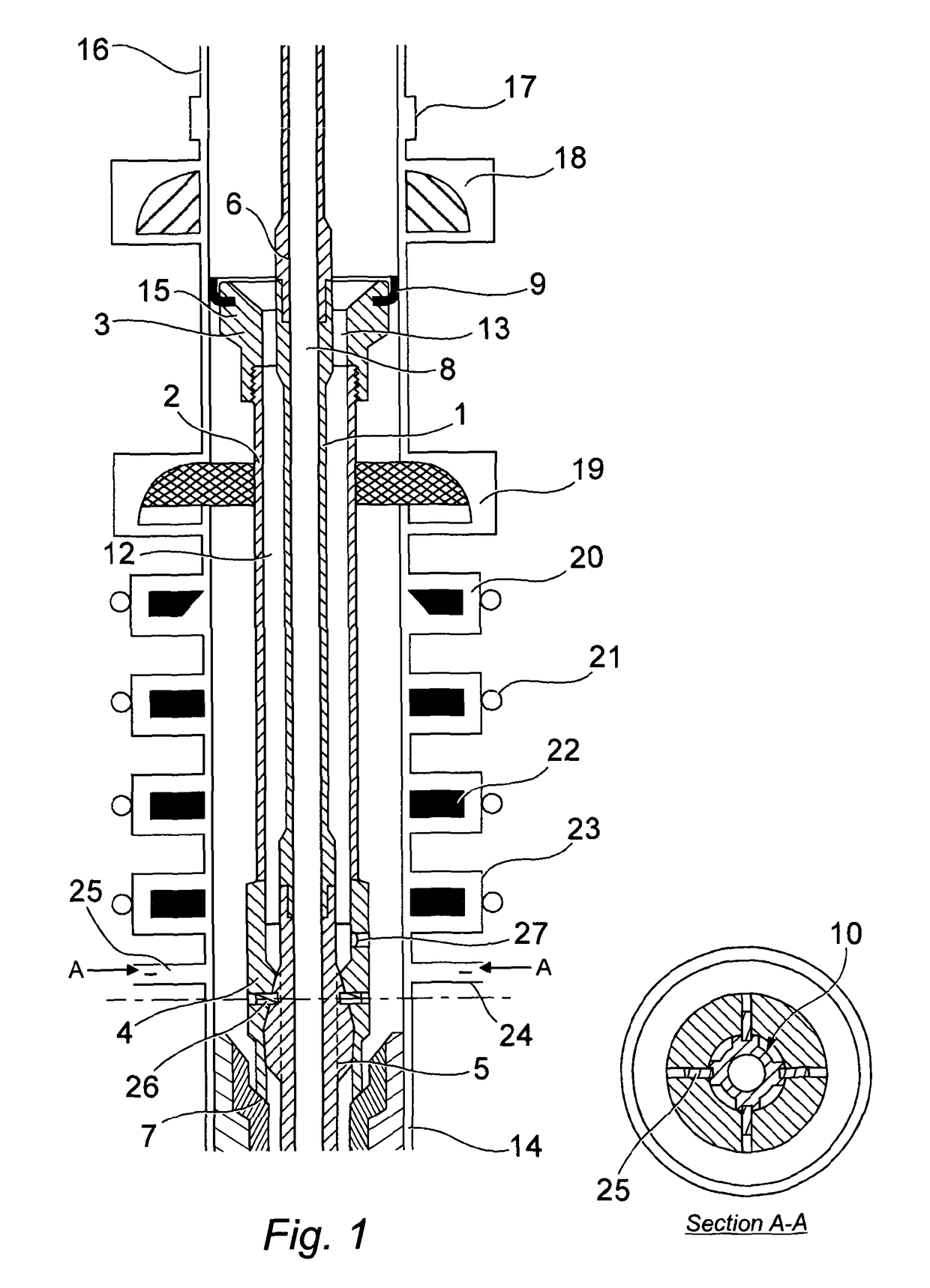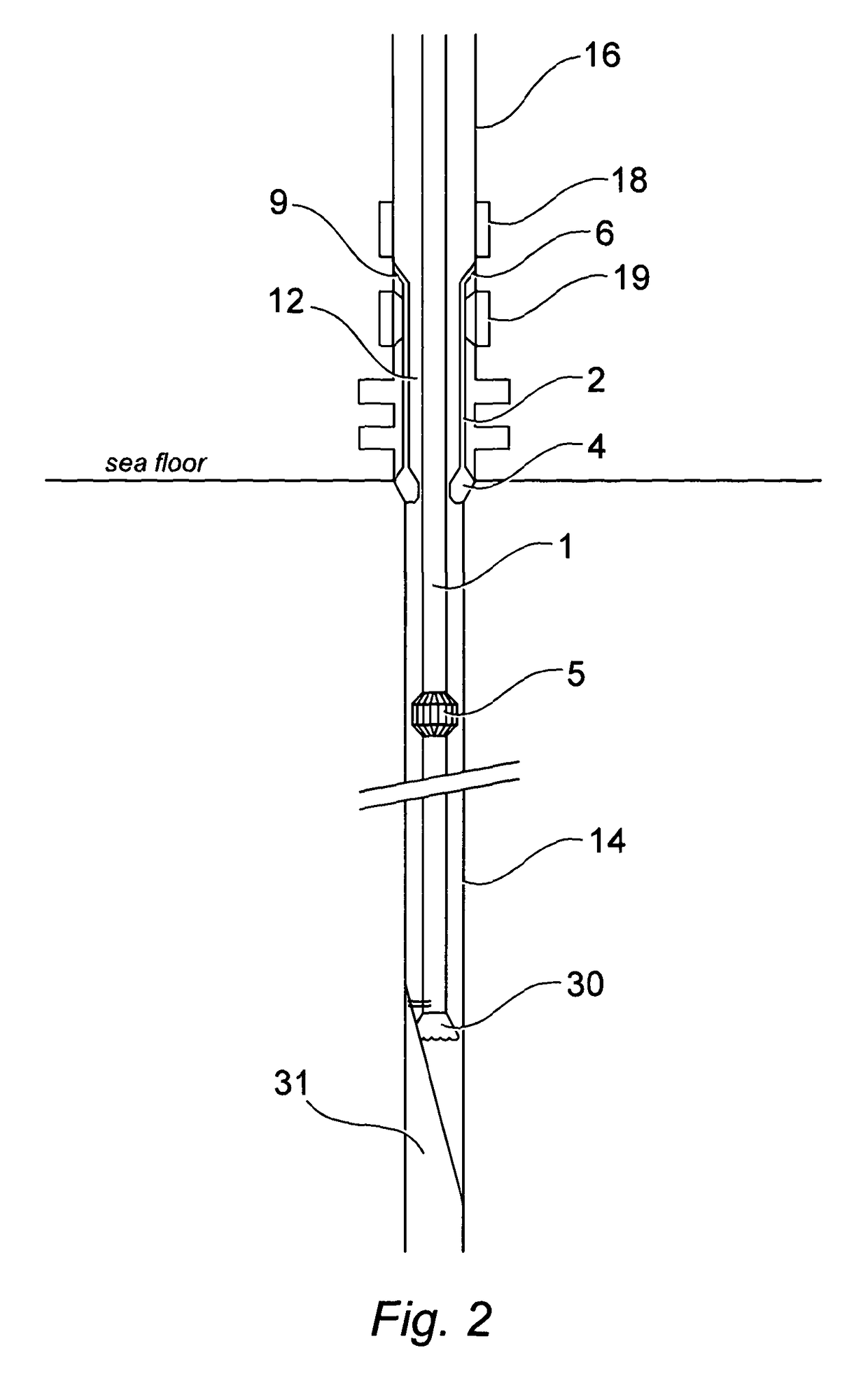Retrievable subsea device and method
a subsea device and a technology of a submerged body, applied in the direction of sealing/packing, drilling pipes, borehole/well accessories, etc., can solve the problems of large amount of swarf which has to be circulated out, large amount of metallic swarf to be recovered, potential risk factor is realized, etc., to achieve the effect of minimising the risk of fouling
- Summary
- Abstract
- Description
- Claims
- Application Information
AI Technical Summary
Benefits of technology
Problems solved by technology
Method used
Image
Examples
Embodiment Construction
[0037]An embodiment of the protective sleeve device of the invention is illustrated in the accompanying figures and shown deployed upon a workstring within a blow out preventer stack (B.O.P.).
[0038]Referring to FIG. 1, the device comprises a hollow drill pipe or mandrel 1, the mandrel having an axial passage 8 for the passage of drilling fluid, and being connected at an upper end to a drill pipe 6 forming part of a work string in the usual way using pin and box threaded connections. A running tool 5 is connected to the lower part of the mandrel 1 and that in turn is also connected to further drill pipe sections forming the drill string (not shown in FIG. 1) below the device.
[0039]A running tool housing 4 attached to the running tool 5 by shear fastener pins 26 also provides a means of attachment for a protector sleeve 2 spaced from the mandrel 1 to define an annulus 12 within the device to allow fluid flow communication with wellbore annulus above and below the device. The upper end...
PUM
 Login to View More
Login to View More Abstract
Description
Claims
Application Information
 Login to View More
Login to View More - R&D
- Intellectual Property
- Life Sciences
- Materials
- Tech Scout
- Unparalleled Data Quality
- Higher Quality Content
- 60% Fewer Hallucinations
Browse by: Latest US Patents, China's latest patents, Technical Efficacy Thesaurus, Application Domain, Technology Topic, Popular Technical Reports.
© 2025 PatSnap. All rights reserved.Legal|Privacy policy|Modern Slavery Act Transparency Statement|Sitemap|About US| Contact US: help@patsnap.com


